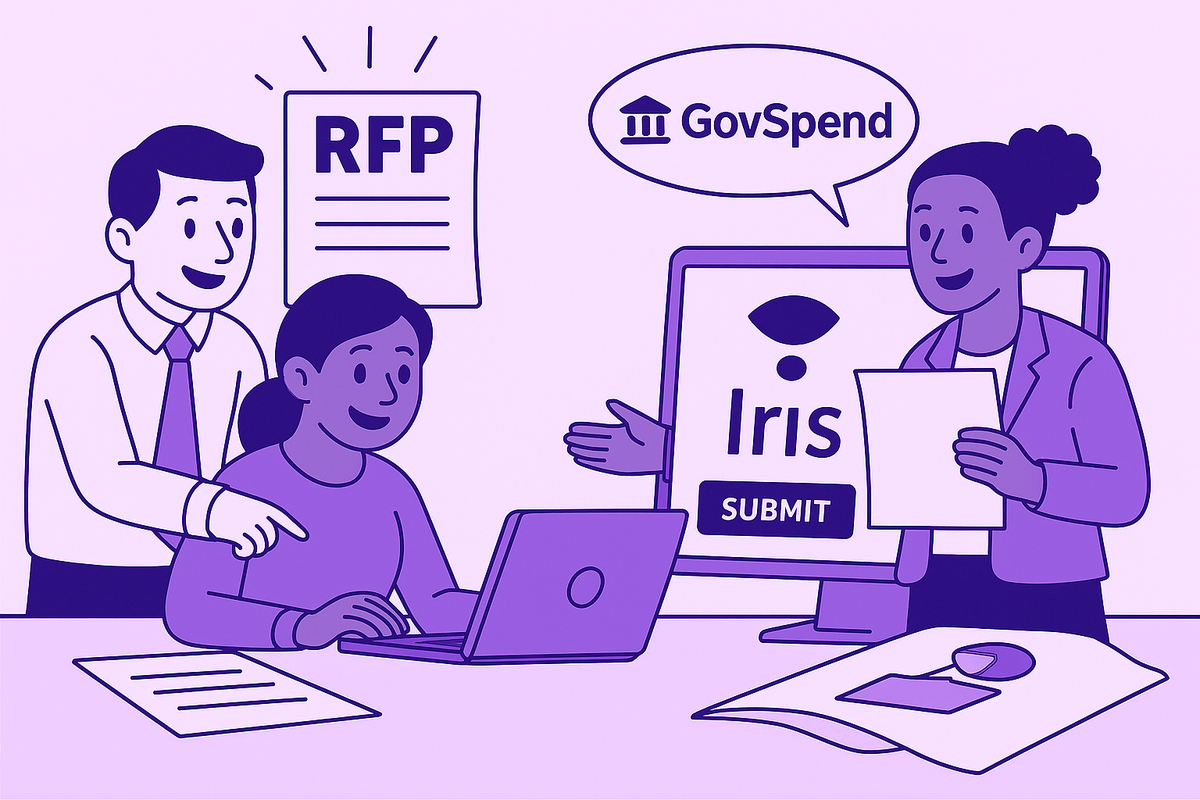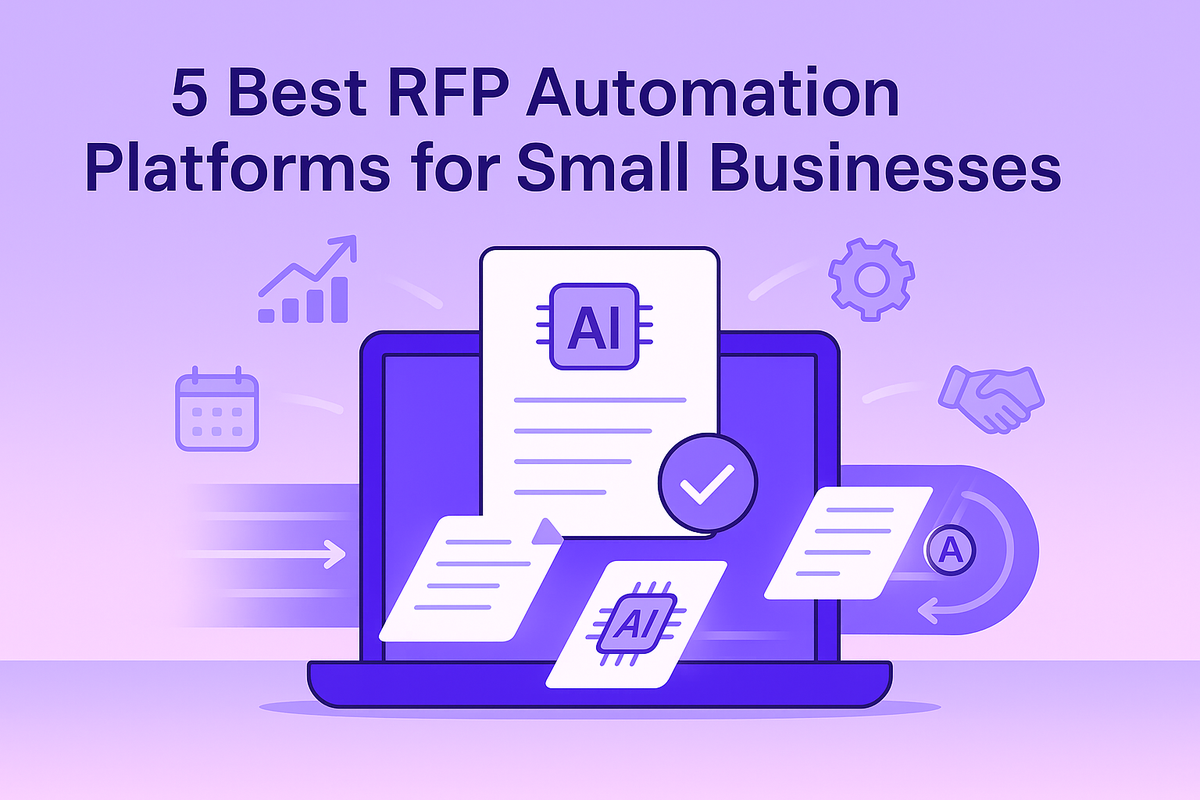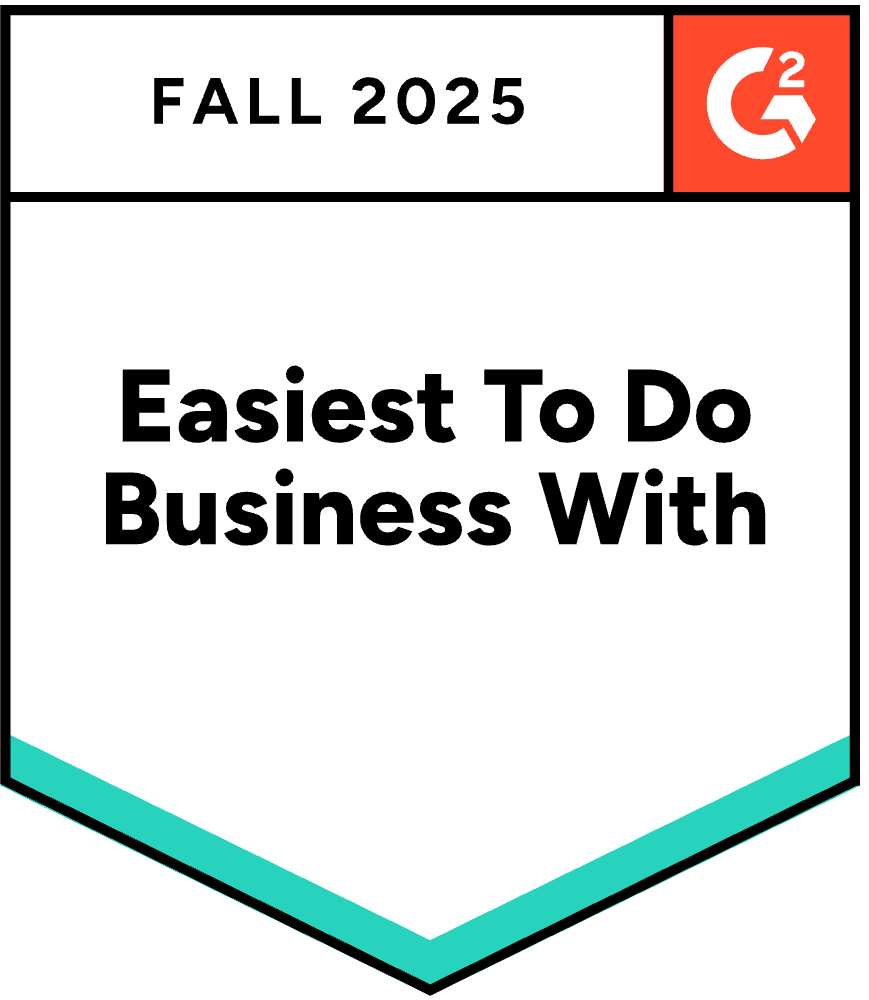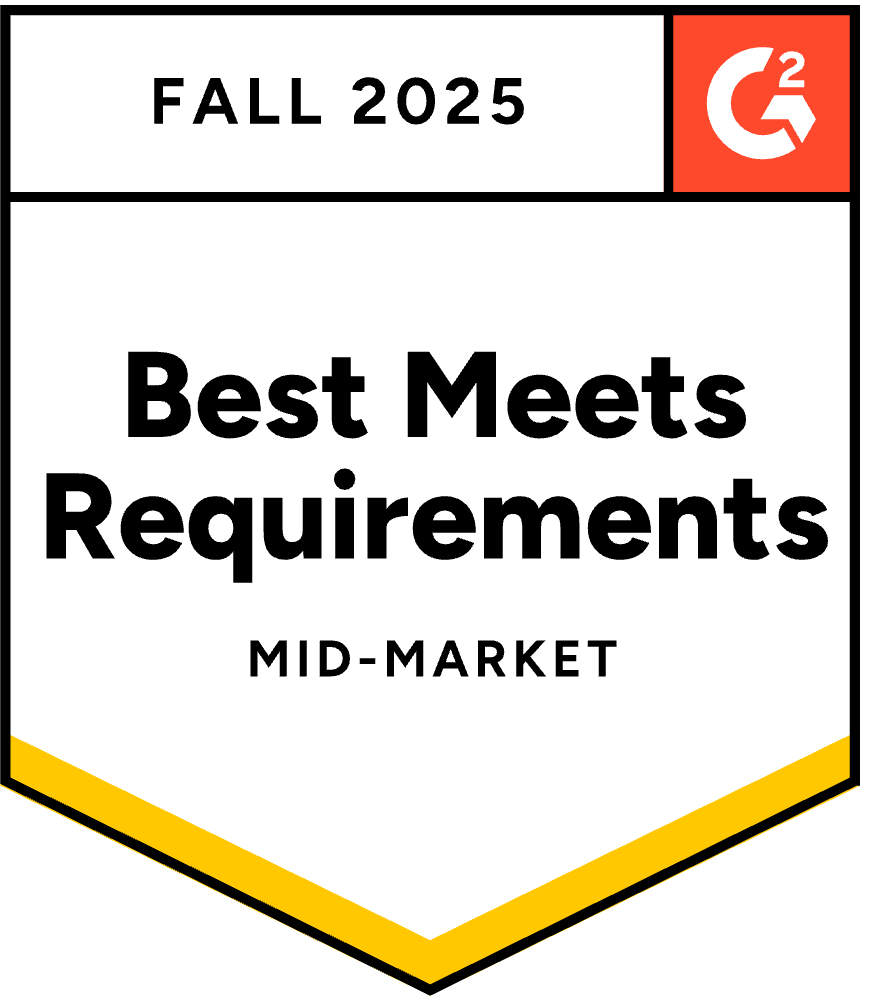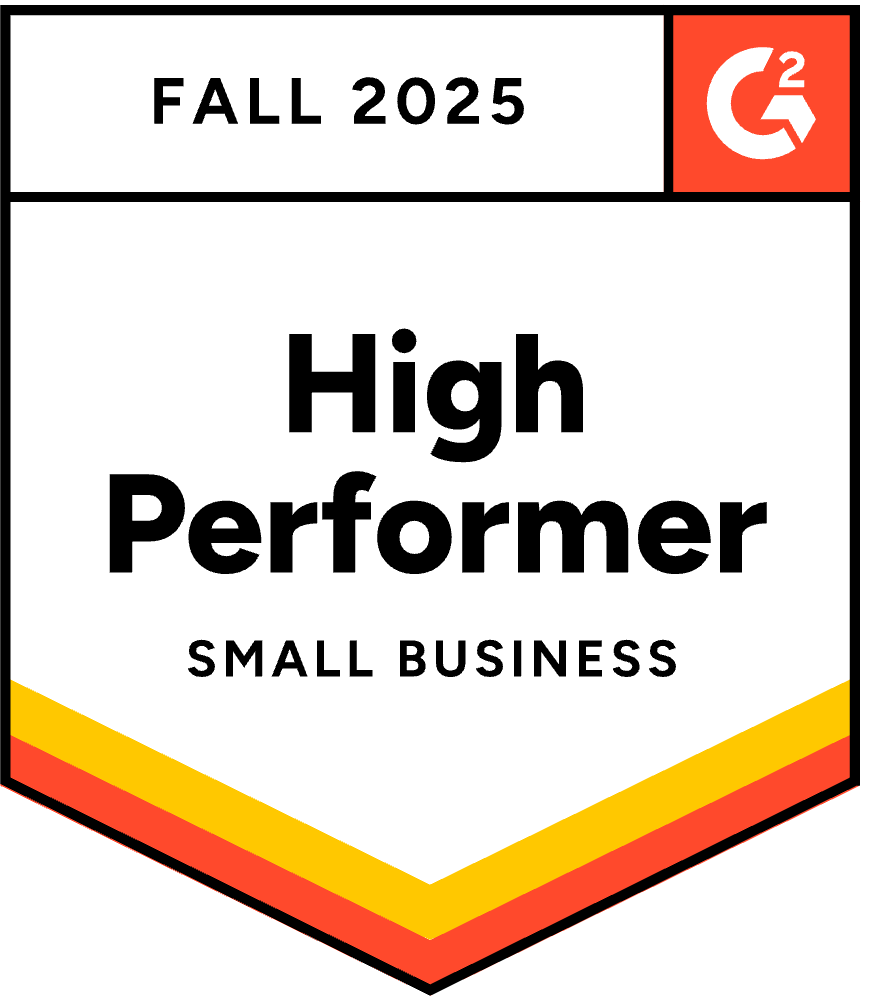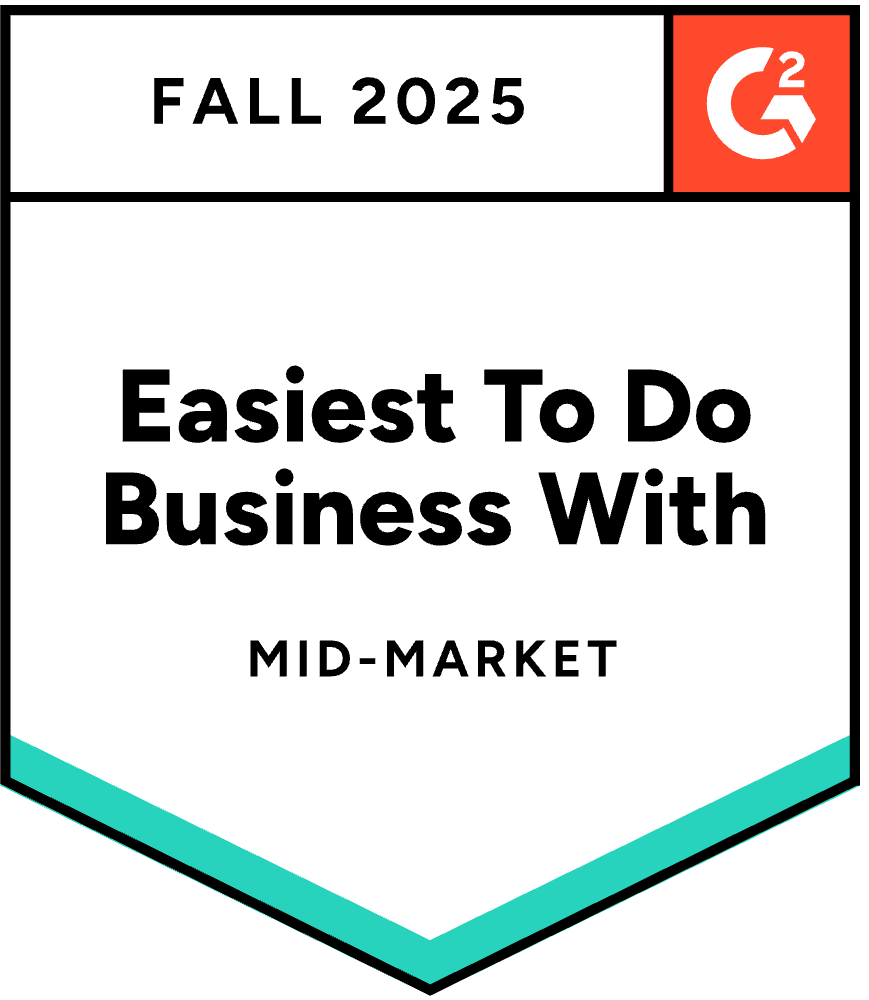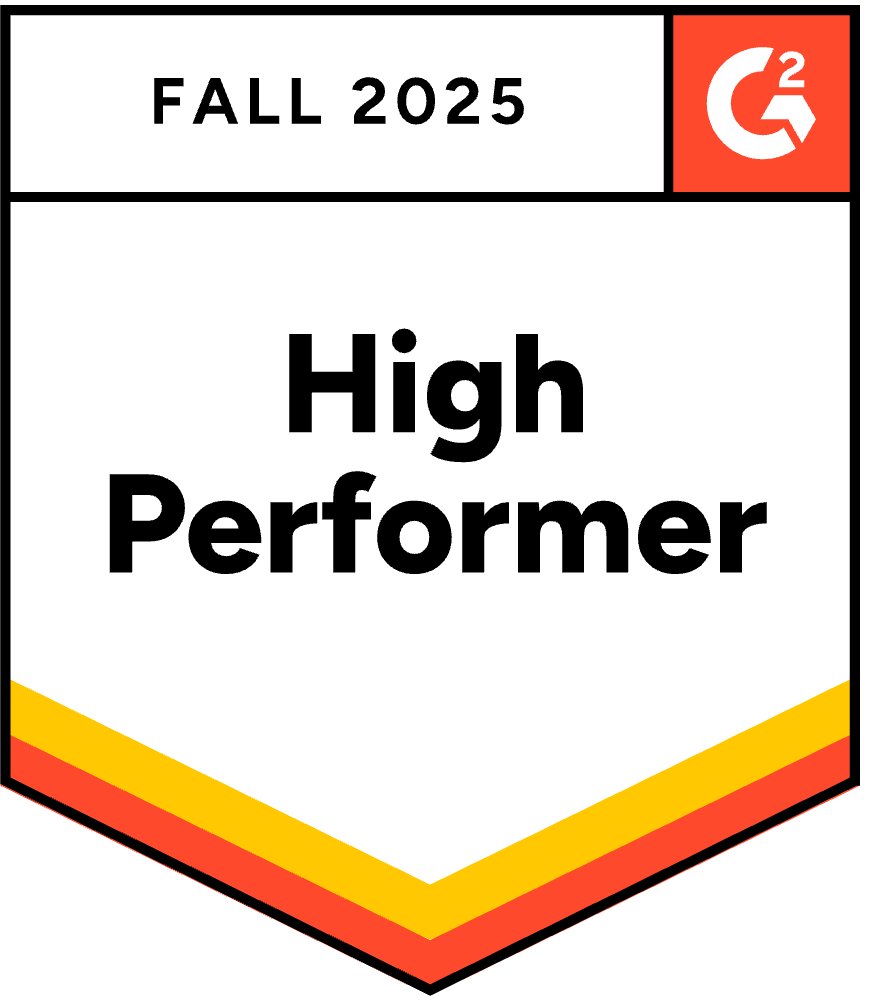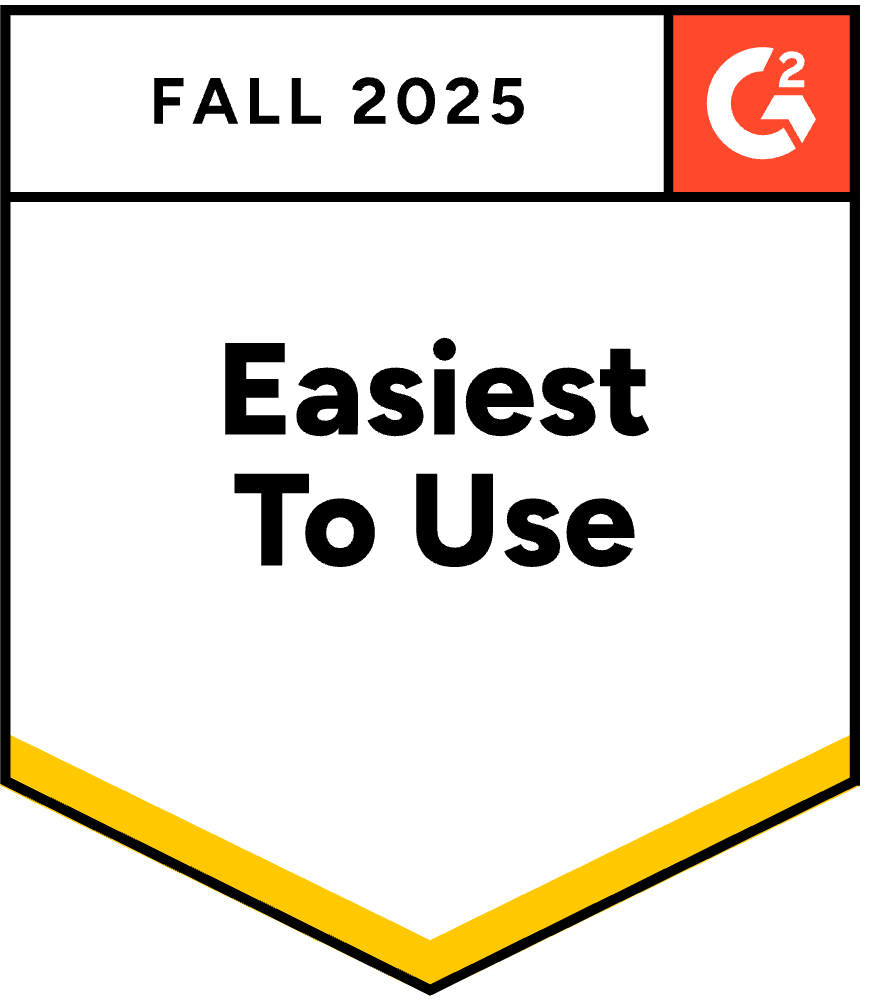Best Software to Edit, Send & Store Proposals (2025)
October 2, 2025
By
Evie Secilmis
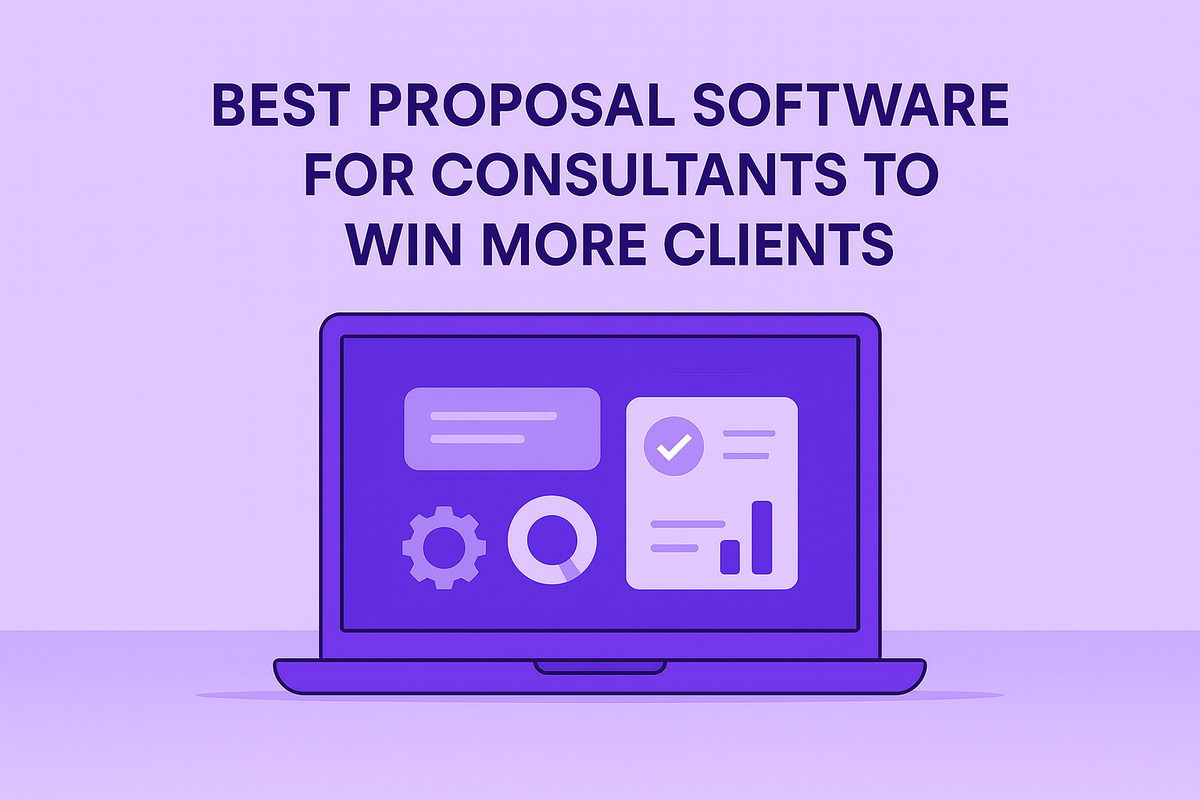
For many consultants, a proposal is far more than a simple price quote. You’re often responding to complex RFPs, detailed security questionnaires, and lengthy SOWs that require precise, accurate information. Manually digging through old files and knowledge bases to find the right answers is a recipe for frustration and errors. This is where modern, AI-powered proposal software for consultants becomes a game-changer. It acts as an intelligent assistant, helping you generate accurate first drafts in minutes by pulling the most relevant, up-to-date content for each specific opportunity. It turns a daunting, multi-day task into a manageable and efficient process.
Key Takeaways
- Streamline Your Process to Win More Deals: Use proposal software to replace slow, manual work. Features like templates, content libraries, and e-signatures help you create professional, on-brand proposals in minutes, not days, so you can close deals faster.
- Choose the Right Tool for Your Team: Focus on what will actually help your workflow. Prioritize software that integrates with your existing tools like your CRM, offers strong team collaboration features, and has an intuitive design that your team will want to use.
- Leverage AI and Analytics for a Strategic Edge: Let AI handle the heavy lifting by generating accurate first drafts and suggesting the most relevant content. Use tracking data to see how clients engage with your proposal, which gives you the insight to tailor your follow-up and have more effective conversations.
What is Proposal Software? (And Why It's a Game-Changer for Consultants)
If you’re a consultant, you know that winning a new client often starts with a great proposal. But let's be honest, creating them can be a major time sink. That’s where proposal software comes in. At its core, this software is designed to help you create, send, track, and manage your business proposals more efficiently. Think of it as your command center for turning a promising lead into a signed contract.
Instead of wrestling with formatting in a Word doc or trying to piece together information from old files, proposal software streamlines the entire workflow. It helps you build professional, on-brand documents that stand out, track when a potential client opens your proposal, and even allows them to sign it electronically. For consultants, this isn't just a nice-to-have—it's a game-changer. It frees you from administrative headaches so you can focus on what you do best: delivering amazing work for your clients. It helps you move faster, look more professional, and ultimately, close more deals.
What Makes Up Proposal Software?
So, what’s actually inside a proposal software platform? While every tool is a bit different, most share a few key components that make the magic happen. You’ll typically find a library of customizable templates to get you started, so you’re not staring at a blank page. A content library is another common feature, letting you save and reuse your best-written sections—like your company bio or case studies—with a single click.
Most platforms also include tools for creating quotes or pricing tables and integrate with your CRM to pull in client details automatically. And to make the whole process seamless, look for features like drag-and-drop editors, document tracking, and built-in electronic signatures to get that final sign-off without any friction.
Sound Familiar? Common Proposal Headaches
Does this sound familiar? You spend an entire day (or weekend) crafting the perfect proposal, meticulously copying and pasting information, only to realize later you left in another client's name. Or maybe you send off a proposal and are met with complete silence. You have no idea if the client even opened it, let alone which sections they read.
Creating proposals manually is not only slow but also full of potential pitfalls. It’s easy to make mistakes, struggle with inconsistent branding, and lose track of which version is the most current. This manual process can quickly become a bottleneck in your sales cycle, slowing down your ability to bring in new business and causing a lot of unnecessary stress.
How Proposal Software Helps
This is where proposal software steps in to solve those exact headaches. By automating the repetitive parts of proposal creation, it drastically cuts down the time you spend on each one. Templates and content libraries ensure your branding is consistent and your information is always accurate and up-to-date. Instead of guessing, you get real-time notifications when a client views your document, giving you valuable insight into their engagement.
Modern tools also leverage AI to make the process even smarter, helping you pull the most relevant content for each specific opportunity. By providing a structured, efficient workflow, proposal software allows you to deliver polished, professional proposals that impress clients and help you win more work, faster.
Must-Have Features for Your Proposal Software
When you’re looking for the right proposal software, it’s easy to get lost in a sea of features. But as a consultant, your needs are specific. You need a tool that not only helps you create beautiful proposals but also streamlines your entire sales process, from pitch to payment. The goal is to spend less time on administrative tasks and more time doing the work that wins and wows clients.
Think of your proposal software as your silent business partner. It should work in the background to make you look professional, keep you organized, and give you the insights you need to close deals faster. The best platforms aren't just digital document creators; they are intelligent systems designed to handle the heavy lifting. They provide a central hub for your content, offer insights into client engagement, and connect seamlessly with the other tools you rely on every day. To help you cut through the noise, I’ve broken down the essential, non-negotiable features every consultant should look for.
Find Great Templates You Can Customize
Starting from a blank page is a huge time-waster. That’s why a solid library of templates is a must. But you don’t want a cookie-cutter proposal that looks like everyone else’s. The best proposal software offers professionally designed templates that are also fully customizable. This allows you to maintain brand consistency across all your client communications, which builds trust and reinforces your professional image. You should be able to easily add your logo, swap in your brand colors, and adjust layouts to perfectly fit your content and style. This way, you get the speed of a template with the personal touch of a custom-built document.
Get Signatures and Track Everything
The moment a client decides to say "yes" is critical, and you don't want to lose that momentum with a clunky signing process. Forget printing, signing, and scanning. Your proposal software should have built-in, legally binding e-signatures. This feature allows clients to sign from any device with a single click, dramatically speeding up your closing process. Some platforms even see the signing process move 3x faster with e-signatures. This not only makes life easier for your clients but also gets your projects kicked off sooner. It’s a simple feature that signals you’re modern, efficient, and easy to work with.
Work Better with Your Team
If you collaborate with other consultants, designers, or subject matter experts, you know how chaotic version control can get. Emailing drafts back and forth leads to confusion and mistakes. Look for software with strong team collaboration features. This includes things like in-document commenting, shared content libraries, and user roles that let you control who can edit or approve a proposal. These tools ensure everyone is working from the same playbook, which improves accuracy and produces a more cohesive, polished final document. It turns a messy, multi-step process into a streamlined, collaborative effort.
See What's Working with Analytics
Ever send a proposal and feel like you’re shouting into the void? Proposal analytics change that. This feature is like having a secret window into your client’s decision-making process. You can get real-time alerts when your proposal is opened, see which sections your client spent the most time on, and know if they forwarded it to others on their team. This data is invaluable. It helps you understand what your client truly cares about and allows you to tailor your follow-up conversations to address their specific interests or concerns, making your sales outreach far more effective.
Connect with Your Other Tools
Your proposal software shouldn't live on an island. To be truly efficient, it needs to communicate with the other business applications you use daily. Look for robust integrations with popular CRM systems like Salesforce or HubSpot, as well as accounting and payment tools like Stripe or QuickBooks. A seamless CRM integration allows you to pull client data directly into your proposals, eliminating manual entry and reducing errors. When a proposal is signed, the integration can automatically create a new project in your management tool or generate an invoice, creating a smooth workflow from start to finish.
Work From Anywhere
As a consultant, you’re not always tied to a desk. Opportunities can arise anywhere, and you need software that can keep up. A cloud-based platform with a responsive, mobile-friendly interface is essential. This gives you the freedom to create, edit, send, and track proposals from your laptop, tablet, or even your phone. Whether you’re meeting a potential client at a coffee shop or need to make a last-minute change before a presentation, having access to your tools from anywhere ensures you never miss a chance to move a deal forward.
Top Proposal Software for Consultants
Finding the right proposal software can feel like a huge task, but it’s all about matching the tool to your specific needs as a consultant. Whether you’re a solo operator sending a few proposals a month or part of a team responding to complex RFPs, there’s a solution out there for you. The best tools help you create professional, organized proposals that stand out to clients, often using templates, automated workflows, and e-signature options to make your life easier.
We’ve rounded up some of the top proposal software options for consultants. Each one has its own strengths, from AI-powered automation for complex documents to beautiful design templates for creative pitches. Think about your current process—what are your biggest time-sinks and headaches? As you read through this list, keep those challenges in mind to find the platform that will help you streamline your work and win more business.
HeyIris.ai
If you’re a consultant who regularly tackles more than just simple sales proposals—think RFPs, RFIs, SOWs, and security questionnaires—then HeyIris.ai is built for you. It uses AI to create an intelligent deal desk that automates the most time-consuming parts of the response process. Instead of manually searching for answers and past content, Iris’s AI-powered platform generates accurate first drafts in minutes. It connects to your existing systems to pull the most current information and even flags outdated content, so you can respond with confidence. This is a game-changer for consultants who need to deliver high-quality, detailed proposals without spending days on each one.
Proposify
Proposify is designed to help sales teams create, send, and track proposals quickly and efficiently. If your main goal is to shorten your sales cycle, this tool is a strong contender. It’s known for its speed, with users creating proposals in an average of 17 minutes or less. The platform focuses on making the entire process smoother, from creation to sign-off. According to their data, companies using Proposify close deals twice as often as the average company, making it a powerful tool for consultants focused on growth and volume. It’s a great fit for teams that need a streamlined, repeatable process for their sales documents.
PandaDoc
PandaDoc is a popular all-around tool that makes it easy to build professional, branded proposals. Its user-friendly, drag-and-drop editor and extensive library of templates mean you can create polished documents without needing a designer. PandaDoc is excellent for consultants who want to quickly send proposals, contracts, and quotes while maintaining a consistent brand image. It also includes features for e-signatures and document tracking, so you know exactly when a client has viewed or signed your proposal. It’s a solid choice for anyone looking for a straightforward way to improve their sales documents and close deals faster.
Qwilr
If you want your proposals to make a strong visual impact, Qwilr is the tool for you. It transforms traditional proposals into interactive, mobile-friendly web pages. Instead of sending a static PDF, you can create a dynamic experience with embedded videos, interactive pricing tables, and rich analytics. Qwilr uses a block-based, drag-and-drop editor and offers over 100 templates to get you started quickly. It also integrates well with popular CRM systems, making it a great option for consultants who want their proposals to feel modern and engaging. This approach helps your work stand out in a crowded inbox.
Better Proposals
Better Proposals is an excellent choice for consultants and sales teams who value speed and great design without a steep learning curve. The platform guides you through the creation process, helping you send beautifully designed proposals in minutes. It’s particularly known for its clean interface and strong integration with HubSpot, making it a seamless addition to your existing sales stack. One of its standout features is its signature tracking, which notifies you the second a proposal is opened, forwarded, or signed. For consultants who want a simple, effective tool that just works, Better Proposals is a fantastic option.
Bonsai
For freelance consultants who need more than just a proposal tool, Bonsai offers an all-in-one solution. It combines proposals with contracts, invoicing, project management, and CRM features into a single, user-friendly platform. This allows you to manage the entire client lifecycle from one place, from the initial pitch to the final payment. Bonsai is designed specifically for freelancers and small businesses, offering a suite of tools that work together seamlessly. If you’re looking to consolidate your software stack and manage your projects from start to finish, Bonsai provides a comprehensive and integrated experience.
QorusDocs
QorusDocs is built for teams that need to respond to complex RFPs and create high-stakes proposals efficiently. Its core strength lies in its centralized content library, which allows you to store, manage, and find approved content quickly. This makes it easier for teams to collaborate and ensure every proposal is accurate and consistent. QorusDocs uses AI to help you find the best content for each response, streamlining the creation process for even the most detailed documents. It’s an ideal solution for consulting firms or teams that handle a high volume of RFPs and need to maintain high-quality, consistent proposals.
How to Choose the Right Proposal Software
Picking the right proposal software can feel like a huge decision, but it doesn’t have to be complicated. When you know what to look for, you can confidently choose a tool that fits your team like a glove and helps you win more business. The best software for you is the one that solves your specific problems and aligns with your goals. Think about what your team struggles with the most—is it speed, design, or consistency?
Breaking down your options into a few key areas can make the process much clearer. Instead of getting lost in a sea of features, focus on what truly matters for your workflow, your team, and your bottom line. We’ll walk through five essential steps to help you evaluate your options and find the perfect fit.
Assess Your Business Needs
Before you even look at a demo, take a moment to map out what you actually need. The best proposal software is the one that’s tailored to your specific business requirements. Start by asking a few questions: How many proposals does your team send out each month? What types of documents are you creating—RFPs, RFIs, SOWs, or simple quotes? Who needs to be involved in the creation and approval process? Your answers will help you create a shortlist of tools that can handle your volume and complexity, ensuring you don’t pay for features you’ll never use or outgrow a platform too quickly.
Evaluate Your Integration Needs
Your proposal software shouldn’t live on an island. To get the most out of it, it needs to communicate with the other tools you rely on every day. A seamless workflow saves time and prevents the kind of copy-paste errors that can derail a deal. Check if the software can connect with the tools you already use, especially your CRM (like Salesforce or HubSpot), to pull in customer data automatically. Good integrations mean less manual work, more accurate proposals, and a smoother process from creation to close. This is a critical step for making sure your new software becomes a central part of your sales process, not just another login to remember.
Consider Your Budget and ROI
Of course, price matters. But instead of just looking at the monthly fee, think about the return on investment (ROI). A cheaper tool that’s difficult to use or lacks key features might cost you more in the long run through lost deals and wasted time. Look at the pricing structure—is it per user, per proposal, or a flat fee? More importantly, consider the potential value. A platform that helps you create better proposals faster can directly improve your win rates and shorten your sales cycle. Frame it as an investment in your business growth, not just another monthly expense.
Test the User Experience
A powerful tool is useless if your team doesn’t want to use it. The user experience (UX) is everything. Most platforms offer a free trial or a live demo, and you should absolutely take advantage of it. During your test run, pay attention to how intuitive the interface is. Can you easily find what you need? Look for key features like a library for reusable content, customizable templates that you can brand, and a simple drag-and-drop editor. The goal is to find a tool that feels easy and empowering, enabling your team to create impressive, professional-looking proposals without needing a design degree.
Review Their Customer Support
When you’re on a tight deadline and something isn’t working, responsive customer support is a lifesaver. Before you commit, find out what kind of support the company offers. Do they have live chat, email, or phone support? Are there helpful tutorials, webinars, or a knowledge base you can turn to for quick answers? Good support also extends to security. You’re trusting the software with sensitive client and company data, so make sure they have strong security protocols and are compliant with privacy regulations. Reliable support provides peace of mind, ensuring you have a partner to turn to whenever you need help.
Get the Most Out of Your Proposal Software
Choosing the right proposal software is a huge step, but the real magic happens when you put it to work effectively. Simply having the tool isn’t enough—you need to integrate it into your daily habits to see those win rates climb. Think of it as moving into a new kitchen; you have all the best appliances, but you still need to learn the recipes. By focusing on a few key areas, you can turn your new software from a simple tool into the engine that drives your sales process.
Streamline Your Workflow
The biggest immediate win with proposal software is getting time back in your day. Instead of starting from scratch every time, you can use pre-approved templates for your most common projects. This ensures every proposal that goes out the door is professional, on-brand, and organized. Many platforms also offer automated approval workflows, so you can get sign-off from legal or finance without chasing people down via email. Add in e-signature options, and you can take a client from interest to a signed contract in a fraction of the time it used to take. It’s all about creating a smooth, repeatable process that lets you focus on the client, not the paperwork.
Improve Your Proposal Quality
A faster proposal is great, but a better proposal is what closes deals. Modern tools use AI and machine learning to help you draft smarter, more accurate content, which means less manual work and fewer embarrassing typos. By creating a centralized content library, you can ensure your team is always using the most up-to-date case studies, security information, and product descriptions. This consistency builds trust with potential clients and shows a high level of professionalism. When your proposals are consistently excellent, you’ll naturally improve your win rates and build a stronger reputation in your industry.
Set Up Analytics and Tracking
Ever send a proposal into the void and wonder what happened? Analytics and tracking features are your answer. This isn't about being a data scientist; it's about getting simple, actionable insights. Real-time data can show you when a client opens your proposal, which sections they spend the most time on, and who they forward it to. This information is gold for your follow-up. If you see they spent ten minutes on the pricing page, you know what to address in your next call. Using sales analytics helps you understand client interest and engage with them more effectively, turning a cold follow-up into a strategic conversation.
Get Your Team On Board
Proposals are often a team sport, but version control can feel like a nightmare of "final_v3_final_FINAL.docx" files. The right software brings everyone into one collaborative space. Features for team collaboration like in-document commenting, real-time editing, and assigned roles make it easy to work together seamlessly. You can loop in subject matter experts to write specific sections and have managers approve changes, all within the document. This ensures everyone is working from the same playbook and that your final proposal is polished, accurate, and a true reflection of your team's collective expertise. Getting everyone trained and using these features is key to maximizing your investment.
Don't Forget Security and Compliance
When you're sending proposals, you're handling some of your client's most sensitive information—and your own. Think about it: project details, pricing strategies, and proprietary business information are all packed into those documents. The last thing you want is for that data to fall into the wrong hands. That’s why security and compliance aren't just boring fine print; they're critical features that protect your reputation and your clients' trust.
A data breach can be devastating for a consultant, leading to lost clients and legal trouble. Choosing proposal software with robust security isn't optional—it's a core part of running a professional business. As you compare different platforms, make sure you’re looking closely at how they handle data protection, whether they can meet industry-specific rules, and how much control they give you over who can see and do what. These elements are just as important as fancy templates or analytics.
Check Their Data Protection Standards
Before you commit to any software, you need to play detective and investigate its security measures. Look for a provider that is transparent about its data protection standards. Reputable companies will have a dedicated "Security" or "Trust Center" page on their website that details how they safeguard your information. Key things to look for include strong data encryption, both when your data is sitting on their servers and when it's being sent. This ensures that even if data is intercepted, it remains unreadable. Also, check their compliance with major privacy regulations like GDPR and CCPA, as this shows a commitment to protecting user data.
Meet Industry-Specific Requirements
If you work in a regulated industry like healthcare, finance, or government contracting, compliance is non-negotiable. A standard proposal tool might not cut it if you need to adhere to strict rules like HIPAA for patient privacy or FINRA for financial communications. Your proposal software must be able to support these industry-specific compliance standards. The right platform will help you maintain a library of pre-approved content and clauses, ensuring every proposal you send meets the necessary legal and regulatory requirements. This not only protects you from liability but also shows clients that you understand and respect the rules of their industry.
Control Who Sees What
Security isn't just about protecting data from outside threats; it's also about managing access internally. Your proposal process likely involves multiple team members, but not everyone needs to see or edit every part of a document. Look for software that offers granular user permissions and role-based access control. This allows you to define who can create proposals, who can edit pricing, and who has the final authority to send them. Features like automated approval workflows are also essential, as they create a clear, trackable process that ensures every proposal is reviewed by the right people before it reaches a client, preventing costly mistakes and unauthorized changes.
How AI is Changing Proposal Software
Artificial intelligence is more than just the latest tech trend—it's fundamentally changing how consultants create and manage proposals. Think of it as having a super-smart assistant who handles the tedious parts of the job, letting you focus on strategy and building client relationships. AI-powered proposal software digs through your past documents, knowledge bases, and even your CRM to find the most relevant and up-to-date information for every new opportunity. This means you can stop spending hours searching for that one perfect answer you wrote six months ago.
The real magic happens when AI helps you generate a first draft in minutes, not days. By using generative AI, these tools can assemble a complete, well-structured proposal that’s already 80% of the way there. Your role then shifts from writer to editor, refining the content and adding the strategic insights that only you can provide. This blend of automation and human expertise leads to higher-quality proposals, faster turnaround times, and ultimately, a better chance of winning the deal. It’s about working smarter, giving you back valuable time to connect with clients and grow your business.
Automate the Busywork with AI
Let’s be honest: a lot of proposal writing is repetitive. You’re often answering the same security questions, describing your company history, and outlining your standard processes. AI excels at automating this busywork. It can instantly pull approved answers from a central content library, ensuring consistency and accuracy across all your documents. This frees you from the copy-paste grind and reduces the risk of sending a proposal with outdated information. Instead of getting bogged down in administrative tasks, you can dedicate your energy to what really matters: crafting a compelling strategy that wins over your next client.
Get Smarter Customization
A generic proposal rarely closes a deal. Clients want to see that you understand their specific challenges and have a tailored solution. This is where AI truly shines. It goes beyond simple automation by helping you customize content for each unique opportunity. Modern AI can analyze an RFP and suggest the most relevant case studies, team bios, and answers from your library. Some tools can even help draft new responses that you can then refine, ensuring every proposal feels personal and directly addresses the client’s needs. This level of personalization shows you’ve done your homework and makes your proposal stand out from the competition.
Create Deeper Integrations
Your proposal process doesn't exist in a vacuum. It connects to your CRM, your project management software, and your file storage. AI strengthens these connections, creating a seamless flow of information between all your essential tools. An AI-powered platform can pull client details directly from your CRM, sync proposal status updates automatically, and ensure that all your content is current. For example, the Iris platform proactively identifies outdated information across your connected systems, so you can trust that your proposals are always built on accurate data. This creates a single source of truth, reducing errors and making collaboration much smoother.
What's Next for AI in Proposals?
The role of AI in proposal management is only going to grow. Looking ahead, we can expect even more sophisticated capabilities that move from assistance to strategic partnership. Imagine AI that not only drafts your proposal but also provides insights into your win probability based on historical data. Future tools will likely offer advanced data visualization to make your proposals more engaging and predictive analytics to help you decide which opportunities are worth pursuing. The goal is to empower you with the information you need to make smarter decisions, tackle more complex projects, and stay ahead of client expectations.
Related Articles
- Top 8 Proposal Software Tools for Small Businesses
- Top Financial Advisor Proposal Software to Win More Clients
Frequently Asked Questions
Is proposal software worth the cost if I'm a solo consultant? Absolutely. Think of it less as an expense and more as an investment in your own time. Calculate how many hours you spend creating a single proposal from scratch. This software can cut that time dramatically, freeing you up to focus on billable client work or business development. The professional look and feel of the documents can also improve your win rate, meaning the software often pays for itself after landing just one extra project.
How much technical skill do I need to set up and use this software? You don't need to be a tech wizard. Most modern proposal platforms are designed with a user-friendly experience in mind. If you can use a word processor, you can use this software. Look for tools with intuitive drag-and-drop editors, clear instructions, and responsive customer support. The goal of these platforms is to simplify your life, not add another technical headache to your plate.
Will using templates make my proposals look generic? Not at all. The best templates are designed to be a starting point, not a finished product. They provide a professional structure that you can fully customize to match your brand. You can easily add your own logo, change the colors and fonts, and rearrange sections to fit your specific needs. Plus, you can save your own customized versions and content blocks, ensuring your proposals are both unique and consistent every time.
What's the real difference between a basic proposal tool and an AI-powered one for RFPs? A basic proposal tool is perfect for creating straightforward sales proposals, quotes, and contracts. It helps you design beautiful documents and track them efficiently. An AI-powered platform, like HeyIris.ai, is built for more complex documents like RFPs, RFIs, and security questionnaires. Instead of just helping with design, it automates the difficult task of finding and assembling accurate answers from your company's knowledge base, saving you from hours of manual searching.
How does the AI actually help me write? Does it just fill in the blanks? Think of AI as a brilliant research assistant, not an author. It doesn't write the proposal for you from a place of pure invention. Instead, it analyzes the client's request and then instantly pulls the most relevant, pre-approved content from your past proposals and connected systems to generate a solid first draft. Your role then shifts from writer to editor and strategist, allowing you to refine the content and add the critical insights that will win the deal.
Share this post
Link copied!



